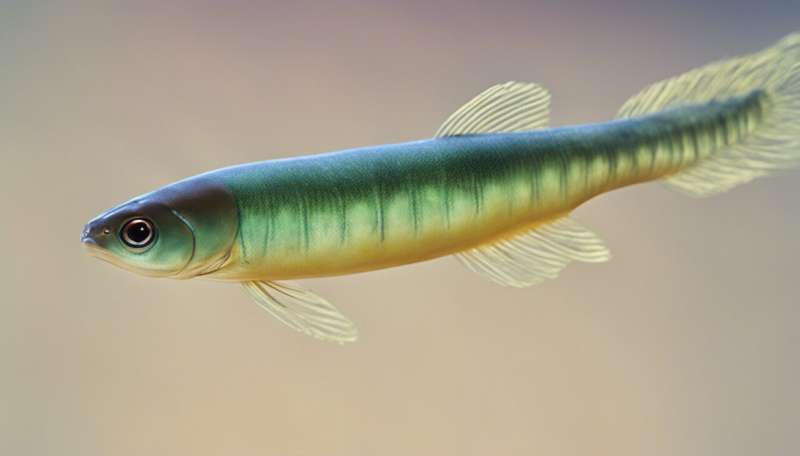Lamprey genome reveals new insights into history of vertebrate evolution

According to the '2R hypothesis', the evolution of modern vertebrates was propelled forward in part by two events in our early ancestry in which the entire genome was duplicated. These events, known as 1R and 2R, yielded multiple copies of every gene, some of which were subsequently lost while others evolved to acquire new functions.
A recent genomic analysis of the lamprey—a descendant of one of the most ancient vertebrate lineages—is helping biologists to home in on the timing of these early evolutionary events.
Byrappa Venkatesh and co-workers at the A*STAR Institute of Molecular and Cell Biology in Singapore investigated Hox genes, which form discrete clusters that help to determine body shape and formation during embryonic development. With the exception of modern bony fish, or 'teleosts', most jawed vertebrates have four clusters of Hox genes as a direct result of 1R and 2R. Venkatesh set out to discern the number of clusters present in jawless fish, or 'cyclostomes', such as the lamprey.
Through extensive DNA sequencing and data analysis of the Japanese lamprey genome, the researchers identified four complete Hox clusters that structurally resemble those found in other vertebrates. They also found four other 'partial' clusters and ultimately ascertained that the lamprey has at least six clusters of Hox genes.
Overall, the analysis provides compelling evidence for the hypothesis that the lamprey genome has undergone three, rather than two, duplication events. While the finding is not new to animal evolution—the rich diversity observed in teleosts, is partly attributed to a third genome duplication event—cyclostomes lack this sort of diversity. "There are only about 40 species of lampreys, compared to roughly 30,000 species of teleosts," says Venkatesh.
The researchers came across other surprises as well when they compared lamprey Hox clusters against those found in certain 'gnathostomes'—the lineage of jawed fish that branched off from cyclostomes long ago and which represents the sister group of jawless fish.
Their analysis suggests that all three lamprey genome duplications probably occurred after the cyclostome–gnathostome split—fully independent of the 1R and 2R events that drove evolution for most other vertebrates. By confirming the unexpected outcome, the researchers hope to potentially narrow down the timing of 1R and 2R.
"We have strong evidence for a '3R' event," says Venkatesh. "But we are carrying out further analyses of the lamprey genome to see if we can obtain better evidence for the timing of the first two rounds of whole-genome duplication."
More information: Mehta, T. K., Ravi, V., Yamasaki, S., Lee, A. P., Lian, M. M. et al. "Evidence for at least six Hox clusters in the Japanese lamprey (Lethenteron japonicum)." Proceedings of the National Academy of Sciences 110, 16044–16049 (2013). dx.doi.org/10.1073/pnas.1315760110
Journal information: Proceedings of the National Academy of Sciences



















